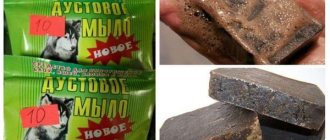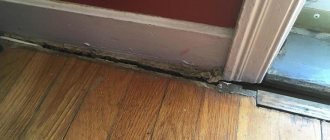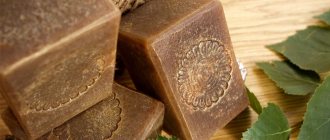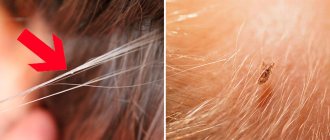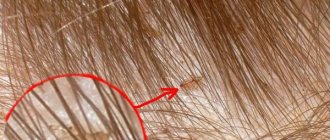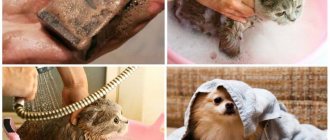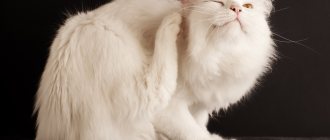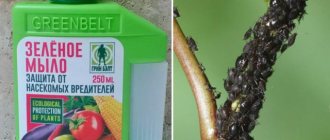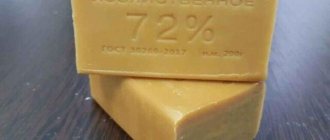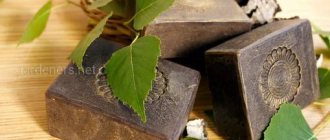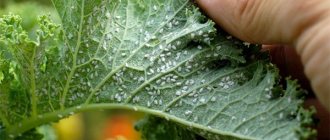The dangers posed by soap
The main danger posed by dust soap is its ability to accumulate in the body.
Severe poisoning can lead to serious consequences, sometimes fatal. Symptoms of DDT poisoning:
- nausea, vomiting;
- Strong headache;
- muscle weakness;
- skin rashes.
If any of these symptoms occur, you should immediately consult a doctor.
The maximum dose of DDT that can cause poisoning is about 20 g for an average-weight adult. This portion of poison can be obtained either in one time of use or in several doses.
It is important to know that gastric lavage and taking activated carbon in case of dust poisoning are useless. Therefore, you should not waste precious time, but immediately seek medical help
There is an opinion that the substance dichlorodiphenyltrichloromethyl can stimulate the appearance of tumors, fetal failure in a pregnant woman, and serious disturbances in the functioning of the nervous system.
Therefore, dust soap is banned in many countries; even its use for agricultural purposes is undesirable.
About toxicity
If an excess amount of dust enters the human or animal body (through the respiratory system, gastrointestinal tract, in contact with the mucous membrane of the eye, etc.), the toxic effect of the toxic substance will inevitably begin.
Toxic
As a result, various signs of intoxication may appear:
- headache, dizziness;
- weakness;
- nausea, sudden vomiting;
- irritation of mucous membranes and respiratory tract;
- dyspnea;
- allergy;
- sometimes - convulsions;
- if poison is ingested in large doses, it will be fatal.
The main danger from using dust soap is that DDT certainly accumulates in the body and is no longer removed from there. Accumulation of the substance is possible with repeated use of the product or as a result of its entry into the bloodstream through wounds, scratches, bite sites, as well as through the mucous membranes of the eyes and mouth if the rules of use are not followed.
If this toxic substance does accumulate, it can lead to very serious consequences:
- disorders of the nervous system and brain;
- mutagenic changes;
- malfunctions of the immune system;
- oncological diseases.
The use of dust soap is prohibited during pregnancy (fraught with fetal death) and for removing lice from children.
Composition of dust soap and principle of action
Dust soap resembles ordinary laundry soap, only it contains a strong insecticide - dichlorodiphenyltrichloromethylmethane (DDT). People call the substance DDT dust, which is why the soap itself received this name. The active component of DDT penetrates deep into the integument of insects, causing their inevitable death. Also, dust destroys the protective shells of lice larvae and eggs, which leads to their instant destruction.
The main component of soap is not excreted on its own; it can even accumulate in the body, entering through scratches, abrasions, and wounds on the skin. Therefore, repeated use of dust can harm the health of humans and animals.
Contraindications
The use of dust soap is contraindicated in the following cases:
- pregnancy and breastfeeding;
- childhood;
- weakened immune system;
- diseases of the nervous system;
- predisposition to allergies;
- for irritated or dry scalp;
- for various skin diseases;
- for reuse (soap can only be used once due to the toxic substance it contains).
Excess DDT can lead to serious consequences:
- Mutagenic changes.
- Deterioration of the body's protective functions.
- Brain dysfunction.
- Formation and growth of cancer cells.
- Serious disturbances in the development of the child while still in the womb.
Signs of dust poisoning are:
- headache;
- the appearance of rashes of various types;
- nausea, indigestion;
- dizziness, lethargy;
- breathing problems;
- muscle spasms.
If even one of the symptoms appears, you should immediately consult a doctor. Taking activated carbon tablets and gastric lavage will not bring results.
Currently, dust soap is almost never produced due to the presence of a toxic component in its composition. You can buy dust on the Internet on special websites selling antiparasitic drugs, in some veterinary stores and pharmacies. The cost of a bar of soap is approximately 20-40 rubles.
It is important to distinguish dust soap from tar soap. Dust is used only in pest control, and tar soap is used for cosmetic purposes to improve the condition of skin and hair. If using dust soap is not possible, it is easy to choose a safer pharmaceutical product
The most popular drugs for lice and nits:
If using dust soap is not possible, it is easy to choose a safer pharmaceutical product. The most popular drugs for lice and nits:
shampoo “Pedilin” and aerosols “Para-plus”, “Rosh tov” - effectively fight lice, while being safe for humans; sprays against lice and nits “Paranit”, “Nyuda” - can be used to treat children from the age of three; hellebore water is an alcohol tincture of hellebore herb, which has a detrimental effect on lice; shampoo and spray “Lice Guard” - the drug is harmless for use in children, but should be used with caution by people prone to allergies; special anti-pediculosis combs - with their help, parasites need to be combed out for several days, but a significant advantage of their use is the absence of contraindications and side effects. Most often, folk remedies are used to combat lice - they are more accessible and cheaper than special ones.
But one can argue about their safety. Popular methods:
Most often, folk remedies are used to combat lice - they are more accessible and cheaper than special ones. But one can argue about their safety. Popular methods:
- Kerosene. Treating your head with kerosene can cause burns, skin irritation or baldness.
- Table vinegar. It also causes burns, but gets rid of the paste that attaches nits to the hair.
- Dust soap. They wash their hair with it, lather it and leave the foam under plastic for half an hour. It soothes the skin, but does not fight insects very effectively.
Folk remedies are inconvenient to use at home, many of them are more dangerous than store-bought ones, especially if used incorrectly. Treatment is longer and more labor-intensive. It is most effective to buy products that kill both lice and nits. They act faster, but due to high toxicity, the method is not suitable for everyone.
About the effectiveness of use against lice
It’s not for nothing that the use of dust soap against lice was so popular in the past, because its effectiveness in this sense really deserves praise. Quite often it is possible to get rid of parasites in just one procedure, and even modern special means cannot boast of this.
Advantages and disadvantages
The high efficiency is explained by the fact that dust soap is capable of dissolving the protective shells of nits, as well as destroying adult parasites and their larvae with even greater ease, corroding their chitinous cover.
Plus, this soap for lice and nits is very inexpensive, which is very important for many, especially considering its effectiveness. The price of dust soap ranges on average from 20 to 50 rubles.
Another question is where you can buy dust soap. Due to the fact that, due to such high toxicity and danger to humans, it is now almost never produced, it is quite difficult to find it. There is a possibility that you can still purchase this salvation from lice somewhere in the hardware stores of some villages, but the chances are, in fact, small. Buying dust soap in a pharmacy now is also quite problematic for the same reason. Therefore, you can probably buy this remedy for lice (by the way, dust soap for fleas is no less effective) only on specialized websites selling antiparasitic drugs.
Using dust soap
This product is compared to ordinary laundry soap. But it contains much more of the main component, called DDT, than other detergents. And it is this substance that helps neutralize crawling lice, but it is this substance that is very toxic. It has long been customary to call such a component dust, which is why the soap itself got its name. Some time ago, such a substance was used in various fields to control pests and insects. Therefore, they sprinkled it on plants, fields and everything that could be affected by parasites.
One interesting fact has been recorded: thanks to dust, it was possible to save the lives of many people from India during the development of such a dangerous disease as malaria. This result was achieved by adding a harmful substance to water bodies, which were the source of breeding of malaria mosquitoes. However, a few years later, scientists began to conduct research, the results of which made many specialists worry. It was discovered that the substance DDT can accumulate in the human body, thereby causing severe intoxication. And in some cases this can be fatal. And then cases began to occur that only confirmed the danger of using dust soap. Birds fed on the fields that were treated with DDT, after which their mass mortality began. And after such events and experiments, it was decided to ban the use of dust in the fight against parasites in many countries.
However, despite this attitude towards dust soap, in some regions they still continued to use it, since its effectiveness against lice is really high. This is due to the fact that the substance DDT is capable of penetrating the body of any parasite and promoting its death from the inside. Therefore, if you treat the hair and scalp or other area of the body where lice have settled with such a detergent, then you can get rid of them and their nits in just one such procedure. And this, of course, is a good and significant result.
It is worth noting that even scientists agree that such an effect is difficult to achieve using many modern lice medications. Another advantage of this soap is that it does not require a larger concentrate. It foams well and you just need to run it through your hair a few times for it to be effective. But is it worth risking your good health in order to quickly get rid of existing lice in this way?
About the composition of soap
The very name of the soap - dust - is explained by the fact that its main toxic component, which has a detrimental effect on lice, is dust, otherwise known as DDT (dichlorodiphenyltrichloromethylmethane). This is a powerful insecticide that can both quickly get rid of parasites and accumulate in the body of people and animals. It is for this reason that the production of dust soap has been banned in many countries, and in our country it has almost ceased.
Three pieces of dust soap
DDT in dust soap is the main difference from tar and laundry soap. The latter were also previously considered means of combating lice, but their effectiveness compared to dust is much lower due to the absence of strong toxic substances in the composition.
Pieces of tar soap
For example, the composition of tar soap is alkalis and phenol derivatives, as well as, of course, birch tar. The latter was often used in Rus' (and even now many people use it) as an antiseptic and a means to improve the condition of hair and skin. Tar is effective against lice only at high concentrations of tar. This is one of its main differences from dust soap, which does not play any cosmetic role, and its action is aimed only at destroying parasites.
As for laundry soap, it has no effect in terms of fighting lice. It contains mainly alkalis, which have no effect on parasites.
Characteristics and useful properties
In its composition, dust is practically no different from ordinary laundry soap. The only difference is that it contains DDT - dichlorodiphenyltrichloromethylmethane, a very toxic substance. It can penetrate under the chitinous cover that protects insects, thereby causing their death. DDT has a very unpleasant odor that is difficult to get rid of.
DDT became widespread. With the help of this substance, insect pests were destroyed in fields and gardens for many years. In some cases, it was used even when there was no good reason for it.
This toxic substance has saved the lives of more than 10 million people. A malaria epidemic began in India. If it were not for the timely use of DDT, the consequences would have been dire. All nearby bodies of water were treated with the substance.
Particular attention was paid to areas where malaria mosquitoes, which are carriers of the disease, accumulated and multiplied. Similar situations were repeated in Greece and Italy
Dust soap became the most popular when they learned about its ability to destroy lice and nits. It has one peculiarity: not only adults, but also larvae die after a single treatment.
Mechanical method
If you do not agree to radical measures against lice - getting rid of hair, chemical agents will cope with the parasites. Special solutions are purchased in pharmacies, in the form of sprays, lotions and shampoos. The composition contains toxic substances, therefore pregnant and lactating women are not recommended to use insecticides. The effect of use is quick, use is convenient, and the medicine is sold in all stores.
In particular demand:
Forsyth Anti-Lice - this drug was specially developed to eliminate head and pubic lice in people of any age and to overcome body lice. Active substances. Anti-louse used in Forsyth leads to complete paralysis and death of affected individuals in a short time. It can be used to process hair, as well as clothing, bedding, and other woven products.
- Medifox in the form of an emulsion. It is diluted in water and applied to the head using a cotton swab. The drug is washed off after 20 minutes.
- Medilis I. This is a permethrin solution. Apply to the roots of the hair and hold for 40 minutes under a scarf.
Chemistry kills adults; larvae must be fought separately or chemical drugs must be used several times.
Using a comb, even nits that are tightly attached to the hairs are combed out. To have an effect you need to follow the instructions:
We suggest that you familiarize yourself with Urethral epithelium in urine
- Wash your hair - you can even use regular shampoo. If your hair is long, you need to apply conditioner. To reduce pain, apply a weak solution of vinegar to the hair, which destroys the attachment of lice to the hair.
- Cover your shoulders with a cloth.
- Divide your hair into several parts and comb each strand gradually.
- Move treated strands away from untreated strands.
When the procedure is completed, the comb is treated with boiling water, and the tissue covering the shoulders is destroyed. The procedure needs to be repeated for 4-10 days, depending on the degree of infection.
Instructions for use
To safely get rid of lice with this product, a person must first understand how to use dust soap correctly.
Sequencing:
- Wet hair well with warm water. Lather a piece of dust soap and apply it to the head infested with lice, achieving the formation of abundant foam.
- A rubber cap or regular bag is tightly placed on the soaped head to prevent the foam from penetrating beyond its boundaries. Wrap a towel over it.
- After the procedure, the foam is thoroughly washed off under running water, and then the hair is washed well with your usual shampoo. To completely wash the dust out of your hair, cleanse your head with shampoo 3-4 times in a row.
- After shampooing, a conditioner is applied to the hair. It minimizes the damage caused to hair and scalp by dust.
- After drying, comb each strand with a special comb to remove dead nits. It is effective to resort to mechanical removal of lice on slightly damp hair.
There is no need to pre-dilute the dust. Use 5% dust soap. You should not treat your head yourself. It's better to involve a family member or friend.
During manipulation, it is recommended to open the window to allow clean air to flow in. A person infected with lice keeps his mouth and eyes closed throughout the entire manipulation with dust.
A person assisting an infected person must wear rubber gloves and a protective mask on his face. If the patient experiences a burning sensation or discomfort on the head, the soap suds are immediately washed off.
Features of application
Dust soap contains a toxic component, so it is very important to follow certain safety measures when using it:
- You cannot carry out the treatment yourself; you need to hire an assistant.
- During the procedure, it is recommended to open the window to provide ventilation.
- It is mandatory for the person carrying out the treatment to use personal protective equipment - gloves, mask, goggles.
- The patient should not open his mouth and eyes until the use of the drug is completed.
- It is better to use 5% dust soap against lice.
- If a burning sensation of the scalp or other unpleasant sensations occurs, the soap foam must be washed off immediately.
- If there are still lice left after the first procedure, it is better to use another removal method.
Instructions for using dust soap against lice and nits
- Apply soap to the entire surface of your wet head, then put on a plastic bag or a special cap on top, and wrap your head in a soft towel;
- Leave for about 30-40 minutes;
- After the time has passed, wash your hair thoroughly several times with regular shampoo and apply a restorative balm;
- Dry your hair and comb it with a fine-toothed comb to remove dead lice and nits.
Soap composition and its effect on hair and scalp
Since the 90s of the twentieth century, laundry soap has been produced in three varieties according to GOST:
- 72% – first category;
- 69% – second category;
- 64% – third grade.
The composition of soap differs only in the percentage of elements, primarily fatty acids.
Fatty acid
These elements are of plant and animal origin and affect the elasticity of hair and skin. With constant use, they eliminate hair loss, split ends, and make the scalp more elastic. When used for antiparasitic purposes, they help restore hair and scalp faster. The following liquid crystals are used in laundry soap:
- palmitic – promotes cell renewal, activates the synthesis of hyaluronic acid, collagen and elastin;
- lauric – has an antimicrobial effect, reduces skin inflammation, promotes gluing of split hair ends.
Kaolin
Kaolin or white porcelain clay is an essential element in laundry soap. It softens the effects of alkalis on the skin.
Important: if kaolin is not present in the soap, then you cannot use it to wash your hair.
Sodium
The most important element that regulates water balance in metabolic processes. It is necessary both to maintain hair moisture and to dilate blood vessels in the scalp. Prevents hair loss and fragility.
Animal fats
This is an integral component of any hair and skin cleanser, which nourishes it, fills it with keratin and provides elasticity.
Sometimes natural fats are replaced with synthetic ones, this only leads to a decrease in the characteristic odor, but not to a decrease in the quality of the product.
Water
Fresh purified water is the basis of any detergents. The process of making soap is impossible without H2O, since all of the above substances are water-soluble, and in water they mix, interact and transform into a homogeneous mass.
Rules for the use of soap products
Laundry soap
Before starting the procedure, you need to grate the product. The required amount of laundry soap is selected depending on the length of the hair. Next, dissolve the resulting shavings in a small amount of water. Treat the hair and scalp with the prepared mixture, leave for a few minutes to act, and then remove with warm water. At the end of the procedure, treat the skin with boric ointment, the concentration of the active substance in which should remain 5%.
Tar soap
First of all, you should carry out the degreasing procedure. To do this, you need to wet your curls and lather with a soap product, then rinse immediately. Then treat your hair again with tar soap and leave for an hour. After the exposure period is over, remove soap suds with warm water. The last stage consists of combing out the dead parasites with a special anti-pediculosis comb, which can be purchased at the pharmacy.
We suggest you familiarize yourself with the Zürner trap: how to make it
Dust soap
Under no circumstances should you resort to using dust soap alone. The procedure is carried out in a well-ventilated room. The person doing the processing must use safety glasses, a respirator and high-density rubber gloves. During the procedure, the patient must close his eyes and mouth tightly.
IMPORTANT! Remember that lice soap that contains dust is used at your own peril and risk! If nausea, dizziness or other manifestations of poisoning occur, you should immediately complete the procedure and contact a medical facility!
Treatment of cats and dogs
Dust soap can be used to combat fleas and other parasites in pets. In this case, be sure to use a special veterinary collar to protect the animal from getting the product into the mouth, eyes and ears.
Parasites are removed using dust as follows:
- Fill a large basin with warm water to about half full, or you can use a bathtub.
- Put a protective collar on your pet, place it in water and wet the fur.
- Lather the entire body of the animal, except for the face.
- Let the foam soak for 5-10 minutes.
- Rinse off the product well (preferably several times).
- Dry your pet with a terry towel.
- After the procedure, give your pet a drink of fresh milk to cleanse the body of toxins and take it out into the fresh air.
Brief instructions for use
Using soap on your hair
If, for some reason, there is nothing left but to use lice dust, precautions must be observed especially carefully:
- carry out the procedure in appropriate “equipment” (gloves, mask or respirator, safety glasses);
- wet hair, soap;
- wrap your head in a bag, put a cellophane cap on top (like for dyeing your hair, but with a rather tight elastic band);
- hold for 30-40 minutes, no more;
- the entire time the soap is applied to the hair, sit with your eyes and mouth tightly closed (breathe only through your nose);
- after the allotted time has passed, rinse your hair with shampoo several times, after which it is recommended to use hair balm;
- Immediately carefully, strand by strand, comb out the dead lice and nits with a special comb.
If unpleasant, and even more so painful, sensations appear during the procedure, it should be stopped immediately by washing off the product several times.
And yet, despite its high efficiency, it is hardly worth using dust soap against lice, given all the consequences that this can lead to. In order not to harm yourself, it is better to use modern safe drugs to remove parasites, rather than subjecting your health to serious tests for the sake of a quick result.
Other ways to eliminate fleas from an apartment
If all of the above methods of removing fleas using folk remedies do not produce results, it’s time for the “heavy artillery.” You will need hellebore water. A substance such as hellebore water is in most cases used to remove lice from people, although it also has an effect in the fight against fleas. Hellebore water is a medical preparation, so when using it you must strictly follow the dosage. The product is applied to the pet’s wet fur, left for 10 minutes, then rinsed off with warm water. Hellebore water is not suitable for use to eliminate fleas in an apartment, but with its help the animal will very quickly be cured of fleas.
Garlic is not only an antiviral and a spicy seasoning, but also a wonderful way to eliminate insects. It is ground on a grater, oil and brewer's yeast are added. The floor covering is treated with this product and left for 10 hours, after which it is washed off with water and detergent so that no trace remains.
To prevent the proliferation and spread of fleas in the house, you can use pine sawdust. You need to scatter a handful of sawdust in the corners of the apartment and leave it for several days.
pine sawdust
It is not for nothing that in highly sterile rooms they treat floors with ammonia: this is a very effective remedy not only against bacteria and microorganisms, but also against parasitic insects.
I would like to note that fleas cannot tolerate the aroma of kerosene. If you treat the floor covering with kerosene, the fleas will go away very quickly and will not return to your home. It is strictly prohibited to treat animal fur with kerosene. If you want to eliminate fleas from an animal, you need to mix vinegar, cologne and ammonia. All these substances have a stupefying effect on fleas: they lose the ability to cling to the skin of the animal.
What is lice and how is it transmitted?
Pediculosis is a serious disease. The scientific name of this small insect is Pediculus capitis, which is where the disease gets its name. They affect the scalp. Usually the insect parasitizes on the back of the head or temples, but sometimes it can move to the eyebrows, beard or mustache of men. Removing lice is relatively simple; their eggs, nits, are another matter. They are firmly attached to the hair by a sticky secretion.
People of any age are exposed to infection, but most often children bring these insects into the house, having become infected from classmates or friends. It is very easy to become infected - the pests jump to another person upon close contact. Infection occurs in the following ways:
- Wearing someone else's headdress;
- Using someone else's comb or hairpin;
- Through towels or bed linen.
Infection is indicated by severe, unbearable itching. Because lice have almost transparent and very small bodies. It is difficult to notice them, but nits are visible without problems. In addition, insects can be caught when scratching the itchy area.
Methods of use against lice and nits
There are several simple options for using this tool. Everyone chooses the most successful and suitable one for themselves. The most common method of treatment is:
- The hair is pre-moistened with warm water.
- Lather with tar soap until a dense foam forms.
- They try to cover all areas, without skipping the behind-the-ear and temporal areas.
- Leave the foam for 30 minutes.
- The hair is thoroughly washed and combed with a fine-toothed comb.
- When the half-dead nits and lice have been combed out, the head is washed again with regular shampoo to remove the unpleasant tar smell.
Another method of using tar soap against lice looks like this:
- The hair is pre-wetted.
- Treat with soap until foam appears.
- Put on a rubber cap and wrap a towel on top to keep warm.
- They wait an hour. During this period, the lice die, and the nits become detached from the hair.
- Comb and wash hair with fragrant shampoo.
- To make parasites easier to comb out, the comb can be lubricated with vegetable oil.
- After each combing out of lice and nits, the comb should be boiled to avoid re-infection.
- For easy application of soap, grate it and dissolve it in a small amount of water. In this state, it will quickly turn into foam when soaping.
There are many medicated hair shampoos based on tar. On lice they have a similar effect to soap, but they contain herbs and substances that improve the condition of the skin and hair structure. To combat lice, it is better to use solid soap, and use shampoo as an auxiliary treatment. The method of application is quite simple:
- apply a little shampoo to wet curls;
- massage the head until foam forms;
- hold for 5-10 minutes;
- washed off.
- After rinsing, the head is thoroughly combed with a comb.
Tar shampoo helps noticeably after just 5 days of regular use.
Duration of treatment
Anti-pediculosis treatment is recommended daily for 14 days. Tar foam should remain on the head for at least half an hour. It is better to carry out the procedure at night. During this time, the smell will disappear, and the remaining parasites will have time to die. If after 2 weeks the lice and nits are gone, you can stop using the soap.
Experts recommend getting rid of lice not only with tar soap. Treatment will be much more effective and shorter if you use the product in combination with classic sprays, ointments and lotions.
In this case, an anti-pediculosis pharmaceutical agent is applied to the head. Distribute it over the entire head and keep it in accordance with the instructions. Then the hair is washed and soaped with tar soap. Wait half an hour and thoroughly rinse off the foam. Comb the dried strands with a comb.
Where to buy dust soap? Alternative remedies
Currently, dust soap is almost never produced due to the presence of a toxic component in its composition. You can buy dust on the Internet on special websites selling antiparasitic drugs, in some veterinary stores and pharmacies. The cost of a bar of soap is approximately 20-40 rubles.
It is important to distinguish dust soap from tar soap. Dust is used only in pest control, and tar soap is used for cosmetic purposes to improve the condition of skin and hair.
If using dust soap is not possible, it is easy to choose a safer pharmaceutical product. The most popular drugs for lice and nits:
- shampoo “Pedilin” and aerosols “Para-plus”, “Rosh tov” - effectively fight lice, while being safe for humans;
- sprays against lice and nits “Paranit”, “Nyuda” - can be used to treat children from the age of three;
- hellebore water is an alcohol tincture of hellebore herb, which has a detrimental effect on lice;
- shampoo and spray “Lice Guard” - the drug is harmless for use in children, but should be used with caution by people prone to allergies;
- special anti-pediculosis combs - with their help, parasites need to be combed out for several days, but a significant advantage of their use is the absence of contraindications and side effects.
Another affordable way to get rid of parasites is to shave your head completely, this will help improve the condition of the scalp in general.
